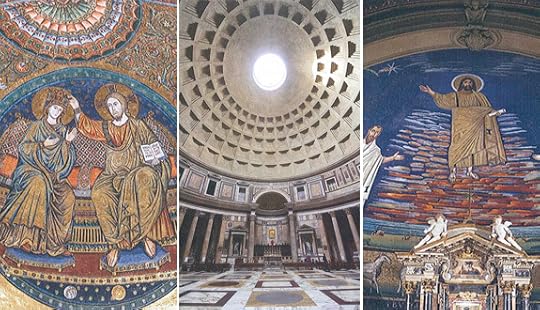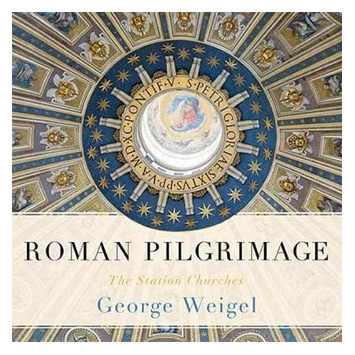A Pilgrimage in Rome—At Home: An interview with George & Stephen Weigel

A Pilgrimage in Rome—At Home | Carrie Gress | Catholic World Report
George Weigel and his photographer son, Stephen Weigel, talk about their book, Roman Pilgrimage: The Station Churches
One of the best-kept secrets of lived Catholicism in Rome, the station churches pilgrimage, which dates back to the earliest centuries of Christianity, can now be experienced by the faithful worldwide in George Weigel's latest book, Roman Pilgrimage: The Station Churches (Basic Books, 2013), co-authored with art historian Elizabeth Lev, and featuring the photography of his son, Stephen.
George and and Stephen Weigel spoke recently with Catholic World Report about the new book.
CWR:Roman Pilgrimage is a day-by-day journey to forty historic churches in Rome. What is significant about these holy sites and this "pilgrimage" around the city?
George Weigel: The "station churches" of Rome take the pilgrim back to the very first centuries of Christian life in the city, as virtually all of them are associated with early Christian martyrs. To make the pilgrimage to the prescribed "station church" for each day of Lent is to relive the experience of the pope and the people of Rome in the first millennium, when popes led a daily procession through the city to the "station" of the day, where Mass was celebrated and the day's fast broken by a post-Mass communal meal. In addition to being a marvelous way to deepen one's experience of Lent (and Easter Week, for the pilgrimage extends through the Octave of Easter), the station church pilgrimage is also a splendid way to "learn Rome" and to explore some of its hidden artistic treasures.
CWR: Who do you envision reading this book? Is it just for those who are actually in Rome for Lent?
George Weigel: Roman Pilgrimage is a good way to "do Rome at home"—that is, to make the Lenten station church pilgrimage from your living room or study, a day at a time, reflecting on each day's liturgical texts and getting to know each day's stational church. So the book really is for everyone. Those planning on taking it to Rome as a companion to do at least a part of the pilgrimage might want to order the eBook, which is gorgeous (all photos are in color) and a lot easier to carry around.
CWR: The book is an insider's look at one of the best-kept secrets of those who live in Rome, although it is certainly not new. What do you think makes this book "work" to bring the experience to those who may have never even stepped foot in the Eternal City?
George Weigel: In addition to being a guide book to more than three dozen venerable churches and their unique architectural and artistic histories, Roman Pilgrimage is a spiritual companion to Lent and a means of discovering the baptismal character of the Lenten season, which is for all Christians, not just the Church's enrolled catechumens. In a sense, Lent invites every Catholic to re-enter a kind of catechumenate each year, examining conscience and pondering the ways in which we have and haven't practiced the imitation of Christ during the previous twelve months. The splendid cycle of Lenten biblical and patristic readings at Holy Mass and in the Liturgy of the Hours offers an unparalleled richness of material for reflection, amplified by the experience of beauty as a "rumor of angels" that everyone takes from the experience of the station churches. Thus after making the "Forty Days" through the station church pilgrimage, we can renew the promises of our own baptism with real conviction, and fully appreciate being blessed with baptismal water at the Easter Vigil or on Easter Sunday.
CWR: Art historian Elizabeth Lev also worked on this project with you. What was her unique contribution to the book?
Carl E. Olson's Blog
- Carl E. Olson's profile
- 20 followers




